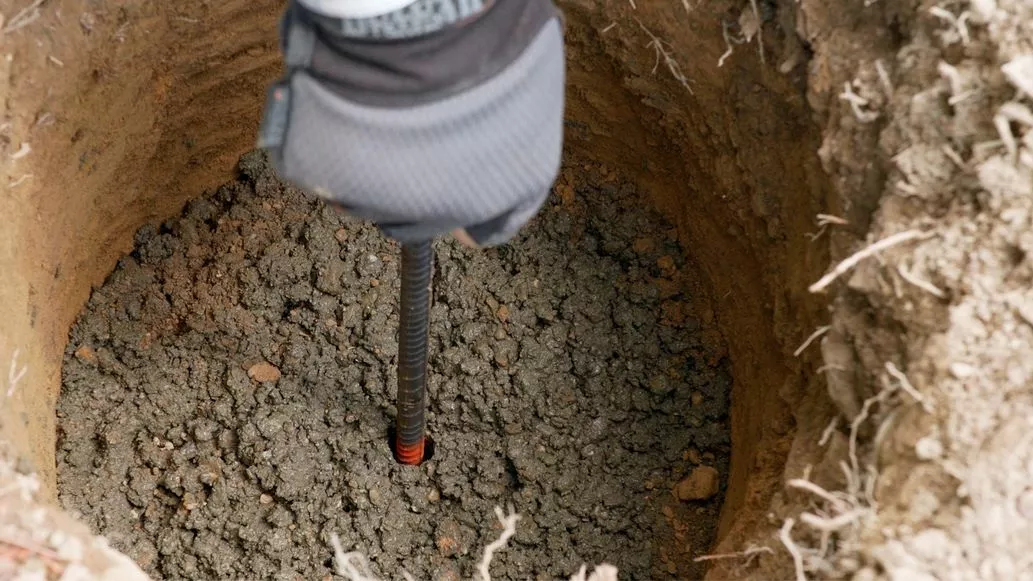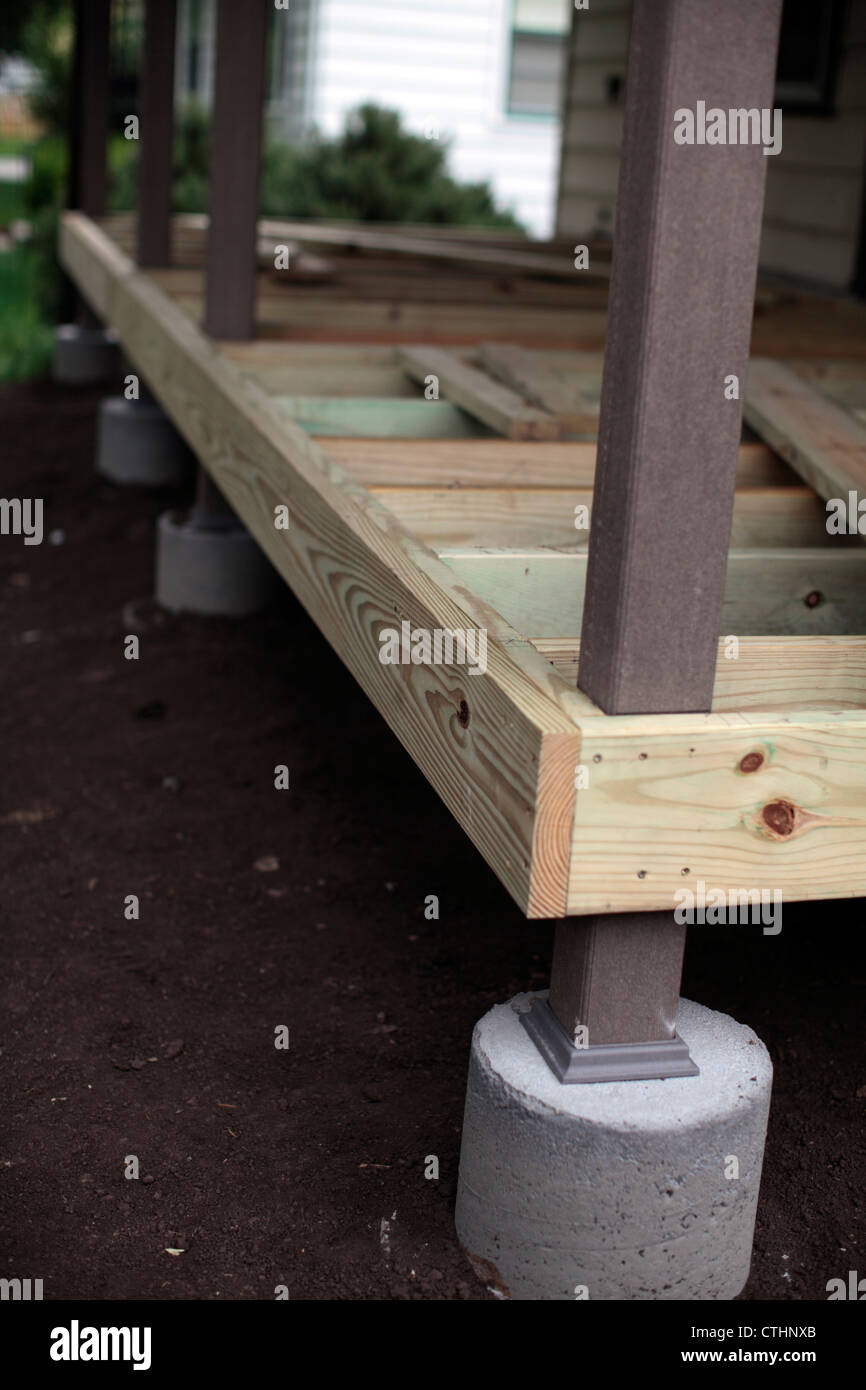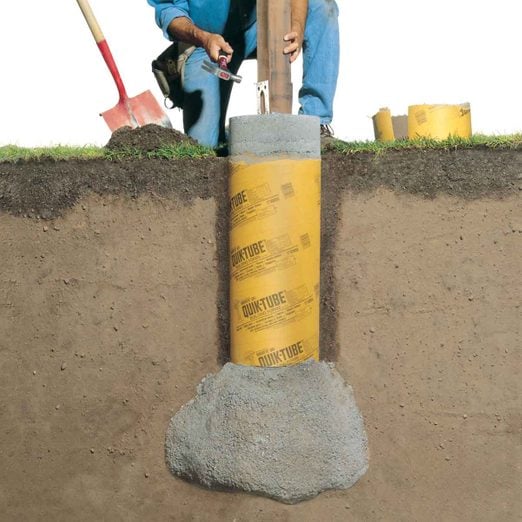Deck Footings 101: Navigating the Fundamentals for a Secure and Durable Deck
Wiki Article
Guarantee Security and Long Life With Correctly Set Up Deck Footings
Deck footings may not be the most glamorous aspect of deck building and construction, yet they play a vital role in making certain security and durability. In this discussion, we will explore the importance of proper deck grounds, aspects to consider during installation, various kinds of grounds offered, detailed setup overview, and maintenance suggestions for ensuring resilient grounds.
Value of Appropriate Deck Grounds
Why are correctly mounted deck grounds important for the security and longevity of your deck? The response exists in the fundamental function that deck grounds play in supporting the weight of the entire framework. Deck grounds are the foundation on which the deck rests, moving the tons from the deck to the ground. When grounds are not properly set up, it can bring about a variety of problems that endanger the security and long life of the deck.Firstly, correctly set up deck footings distribute the weight of the deck evenly, avoiding any type of unequal settling or sinking. This is especially crucial in areas with unsteady soil, as it helps to alleviate the danger of the deck falling down or changing. In addition, well-installed grounds ensure that the deck continues to be degree, protecting against any kind of architectural damages that can take place when a deck comes to be unequal.
Secondly, correctly installed grounds offer a strong anchor for the deck, avoiding extreme activity and sway. This helps to maintain the structural integrity of the deck, reducing the threat of injuries or mishaps. It likewise minimizes the wear and tear on the deck, allowing it to withstand the components and routine use for a longer time period.
Aspects to Consider for Deck Ground Setup
When installing deck grounds, there are a number of vital variables to consider for proper installment. These elements can considerably impact the security and longevity of your deck. Primarily, you need to figure out the kind of soil on which the deck will certainly be built. Different soil kinds have various load-bearing capacities, so it is vital to conduct a soil examination to make certain the grounds can support the weight of the deck and its passengers. In addition, the location and layout of the deck must be carefully planned to prevent any kind of barriers such as trees, utility lines, or underground pipes. It is likewise vital to consider the regional environment and weather, as these can impact the durability of the footings. For example, areas with a high water table may require extra procedures to avoid water damage. Lastly, the size and product of the grounds need to be picked based on the size and weight of the deck, in addition to the neighborhood building ordinance and policies. By thinking about these aspects, you can make sure the correct installation of deck footings and enjoy a long-lasting and stable deck.Kinds Of Deck Grounds to Select From
There are numerous various sorts of deck grounds available for you to pick from. Each type has its very own advantages and disadvantages, so it's important to consider your details requirements and the problems of your deck before deciding.One common kind of deck ground is the concrete ground. This includes excavating openings in the ground and pouring concrete into them to create a solid structure. Concrete grounds are sturdy and provide superb security, making them appropriate for decks in areas with difficult soil conditions or high wind loads.
An additional choice is the helical pier footing, which contains a steel shaft with helical plates that are screwed right into the ground. These grounds are quick to install and can be made use of in different soil kinds, including sandy or clay soils. They are additionally adjustable, allowing for very easy leveling of the deck.
Sonotube grounds are an additional popular selection. These footings are developed by putting a cardboard tube in a hole and loading it with concrete. Sonotube footings are reasonably easy to mount and supply sufficient security for smaller decks Read Full Report or in locations with less requiring soil conditions.

When picking the sort of deck ground, it's essential to consider elements such as soil conditions, deck dimension and weight, neighborhood building regulations, and individual choices. By picking the appropriate footing type, you can ensure the stability and longevity of your deck.
Step-by-Step Overview for Putting Up Deck Footings

Establish the location: Start by marking the precise placement of each footing utilizing stakes and string (Deck Footings). Take into consideration any neighborhood structure codes or policies relating to setback distances
Dig the holes: Utilize a blog post opening digger or an auger to dig the holes for the footings. Typically, a deepness of at the very least 36 inches is advised for security.
Level the holes: Guarantee that all-time lows of the openings are degree (Deck Footings). This can be attained by utilizing a degree or a straight board across the top of the holes
Add gravel: Location a layer of gravel at the base of each hole to enhance drain and stop the ground from sinking into the soil find out this here gradually.
Put the footing forms: Insert the footing forms into the holes, ensuring they are focused and degree. Usage risks to secure them in position.
Mix and pour concrete: Comply with the directions on the concrete mix bag to prepare the concrete. Put the concrete right into the ground kinds, loading them completely.
Smooth the surface: Utilize a trowel to smooth the surface area of the concrete and get rid of any air pockets. Allow the concrete to treat according to the manufacturer's directions.
Upkeep Tips for Long-lasting Deck Footings
Proper maintenance is important for making certain the long life and security of deck grounds. By regularly inspecting and maintaining your deck grounds, you can stop damage and potential safety risks. One essential element of maintenance is to routinely look for any kind of indicators of damage, such as splits or activity in the grounds. If you discover any concerns, it is very important to address them quickly to avoid more damage.Routine cleaning is also necessary for preserving deck footings. Dirt, greenery, and particles can build up around the grounds, which can bring about moisture accumulation and degeneration. Cleaning the grounds frequently, utilizing a brush or a stress washer, can help avoid these problems and expand the lifespan of your deck.
In addition to cleaning, it is essential to maintain the location around the grounds free from any kind of blockages. Avoid stacking items against the footings or enabling plants to grow as well near to them. These blockages can catch dampness and cause the footings to degrade with time.
Lastly, regular resealing of the footings is recommended to safeguard them from wetness and other ecological variables. Using a water resistant sealant can assist stop water damages and prolong the life-span of the footings.
Conclusion
Finally, appropriate setup of deck grounds is critical for ensuring stability and longevity of your deck. Factors such as soil type, tons capability, and regional structure codes require to be taken into consideration when choosing the appropriate kind of deck footings. Adhering to a detailed overview for installment and normal upkeep will certainly assist to make sure the footings remain long-lasting and durable.In this discussion, we will certainly discover the value of appropriate deck footings, elements to consider throughout installment, various kinds of footings available, detailed setup guide, and upkeep ideas for guaranteeing long-lasting grounds. Deck grounds are the foundation on which the deck relaxes, moving the load important site from the deck to the ground.One common kind of deck footing is the concrete ground. Place the footing forms: Put the footing forms right into the holes, guaranteeing they are centered and degree.In final thought, proper installment of deck grounds is critical for making sure stability and long life of your deck.
Report this wiki page